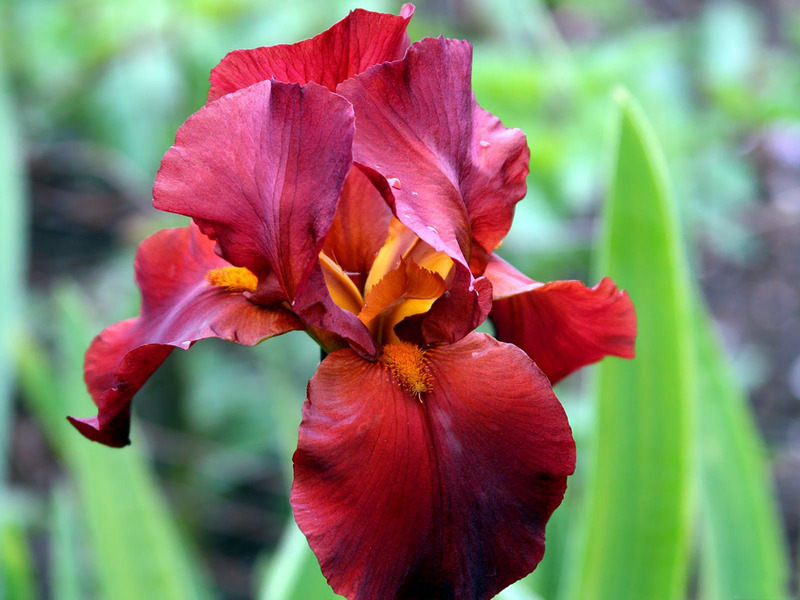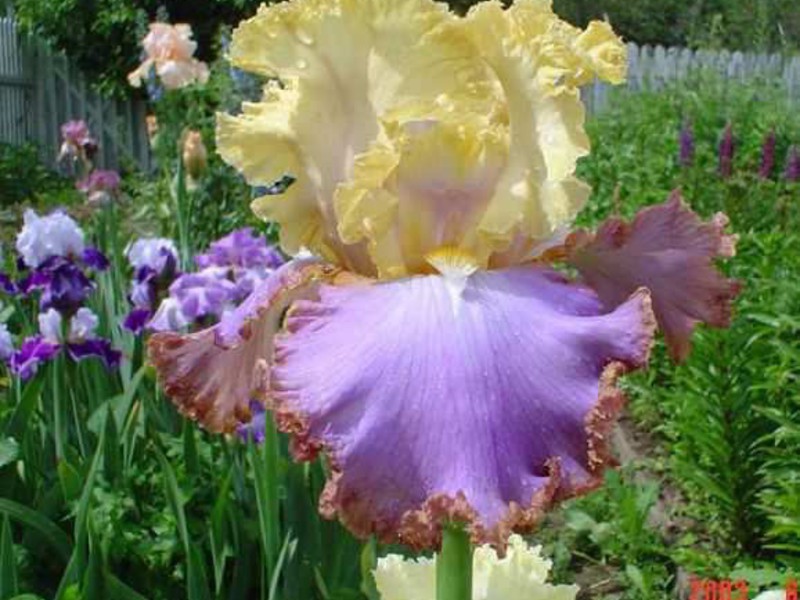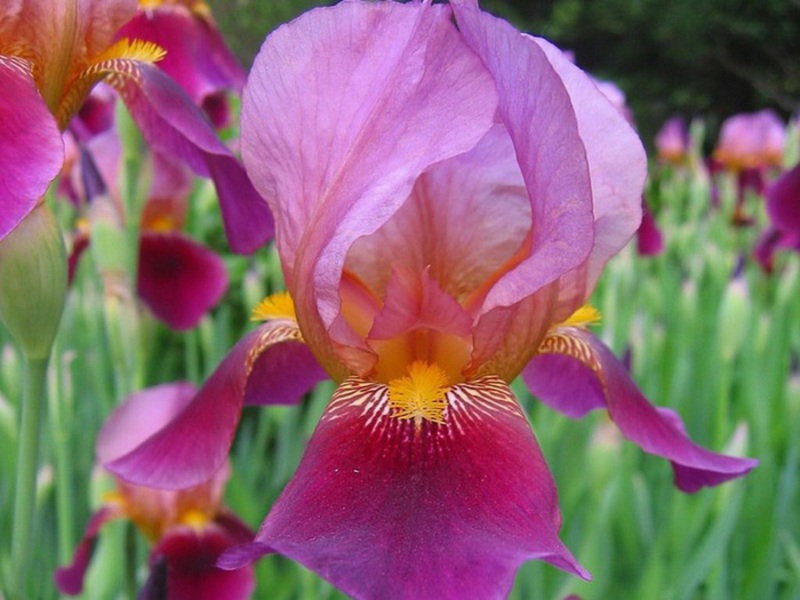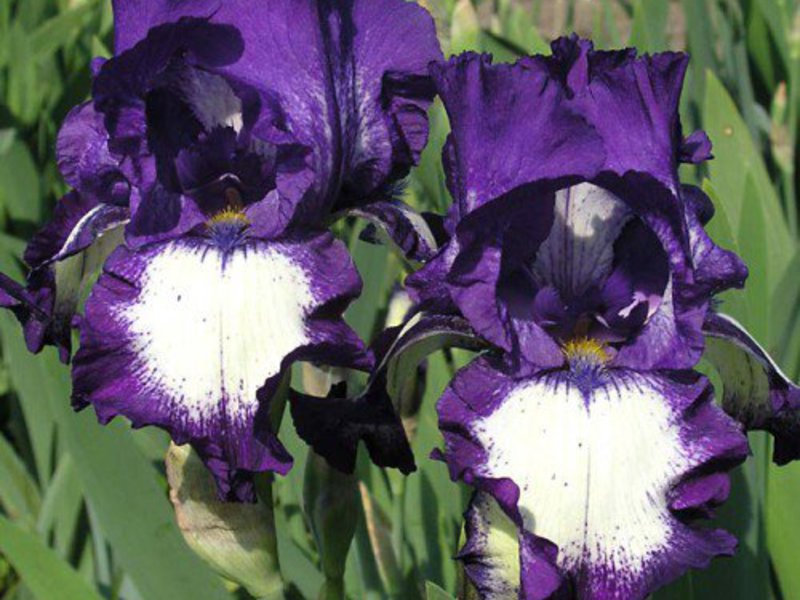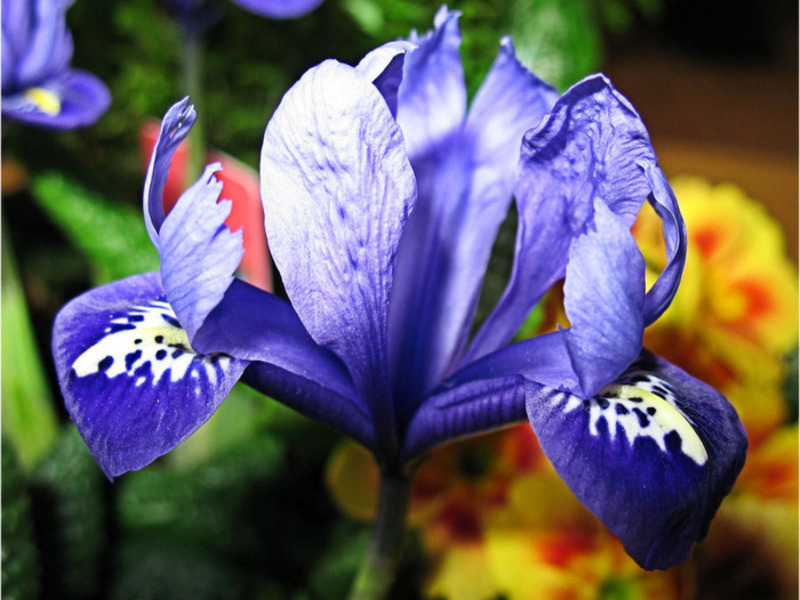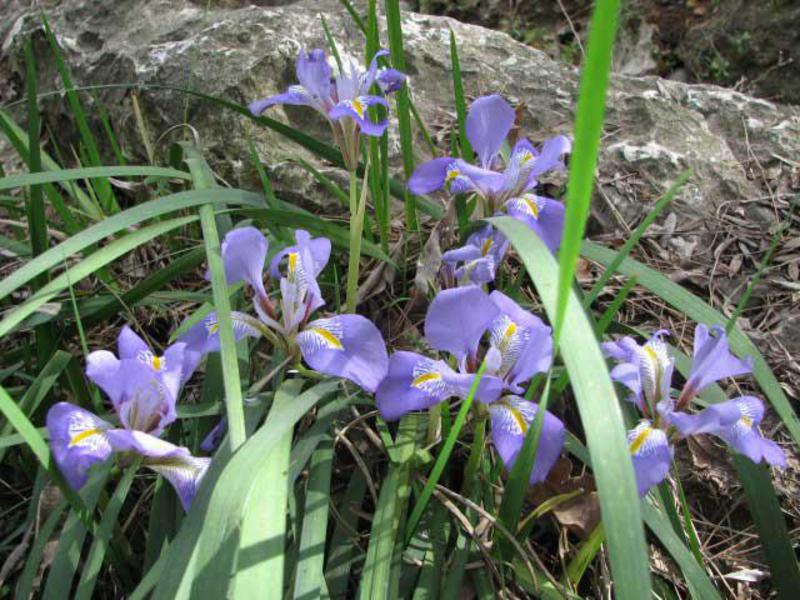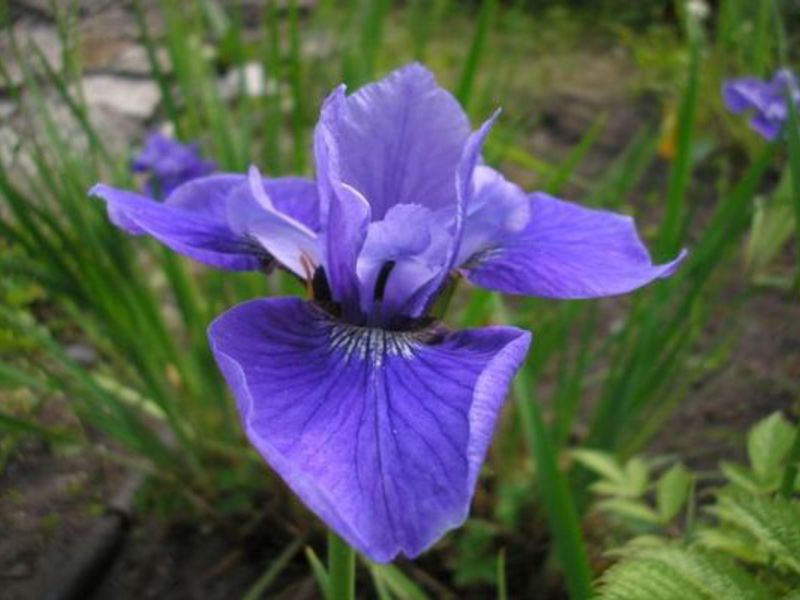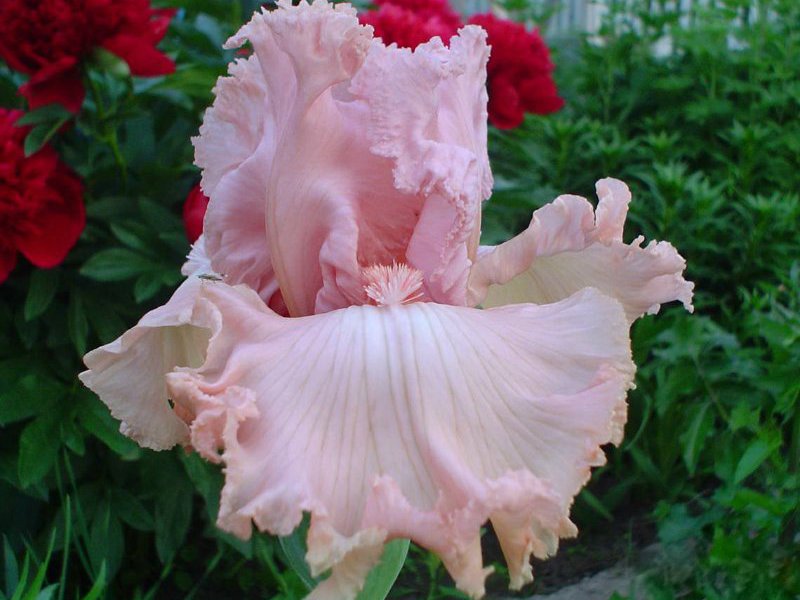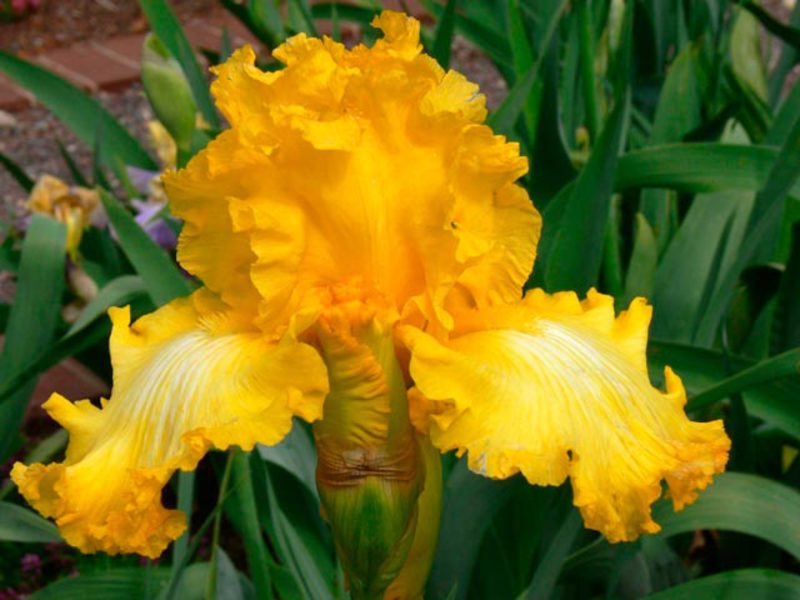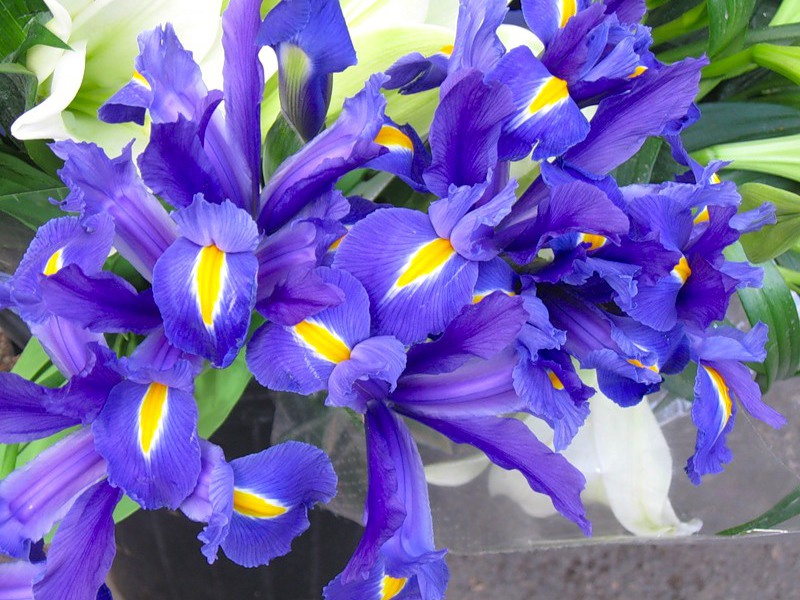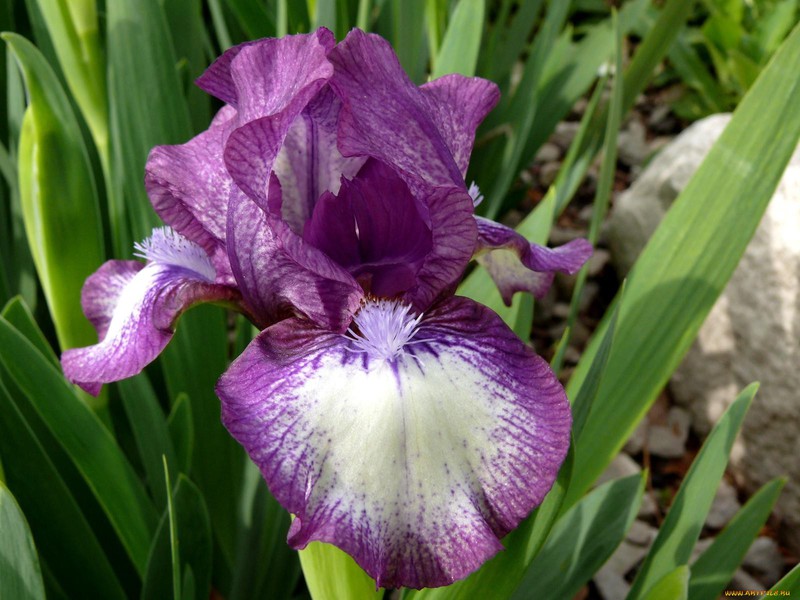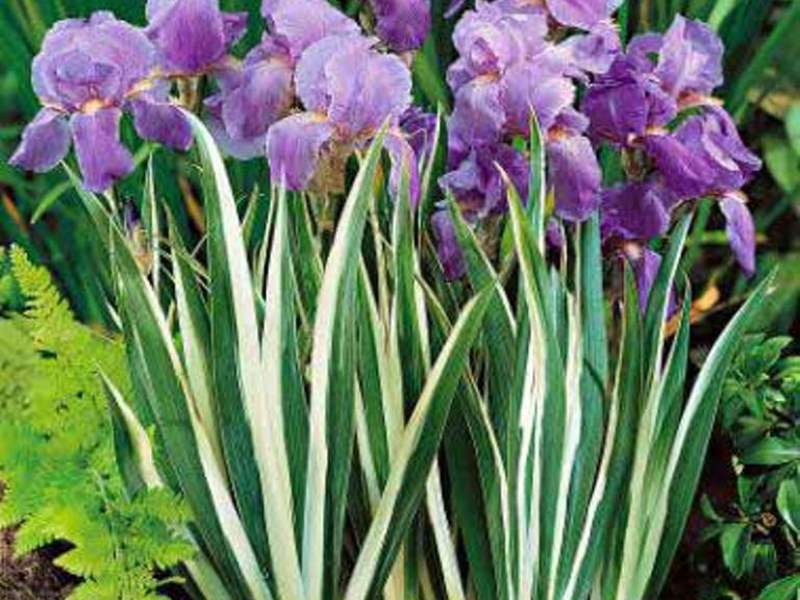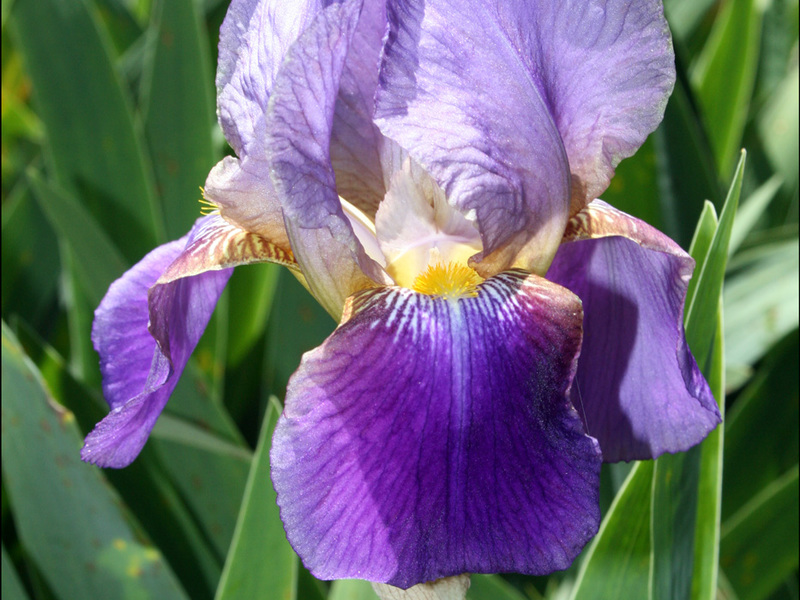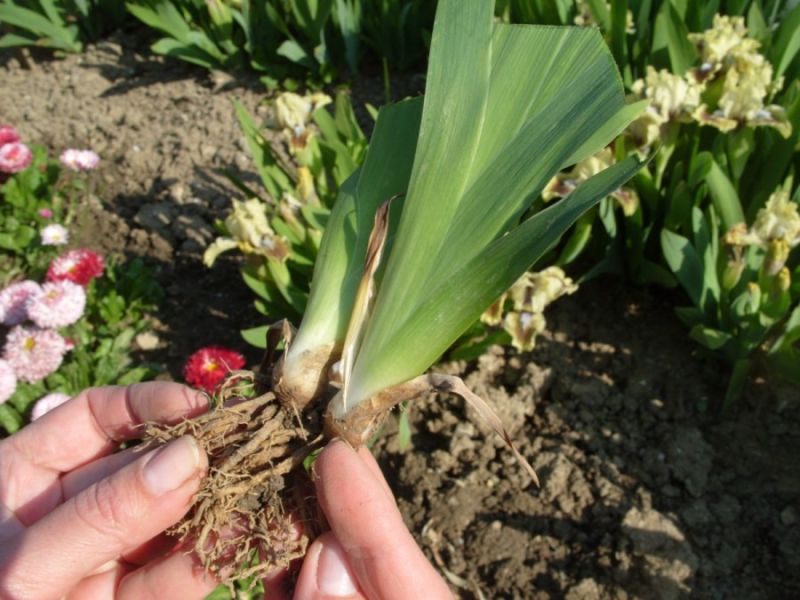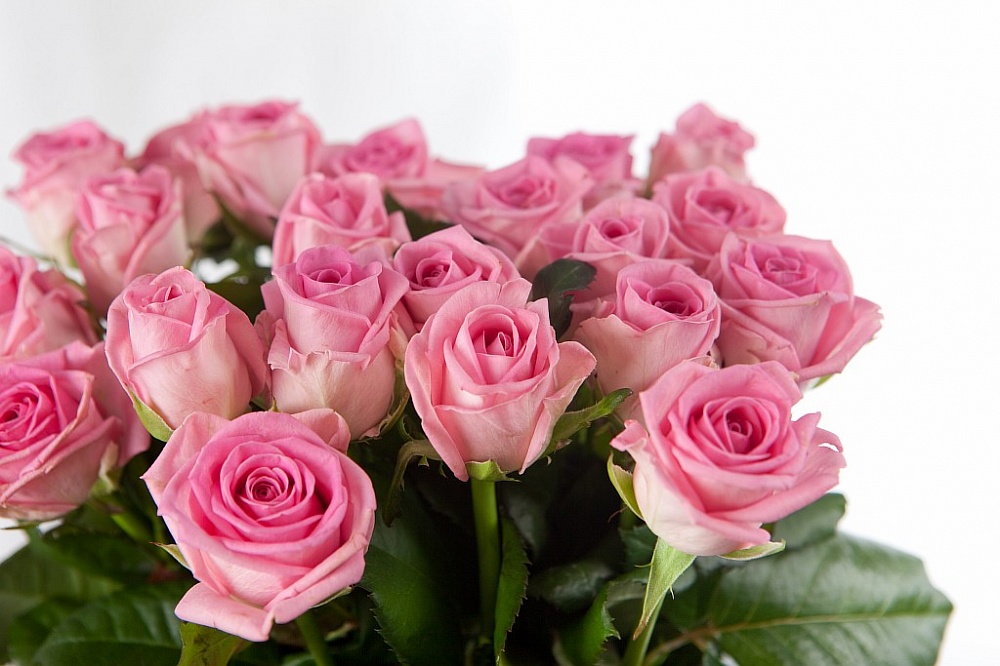Irises, or, as they are also affectionately called, cockerels or irises, have been known to mankind since ancient times and are distributed almost all over the globe. These unpretentious flowers are outwardly similar to orchids and can have a variety of colors, including the entire spectrum of rainbow colors. That is why the plant was named after the Greek goddess of the rainbow Iris. Flowers make magnificent bouquets (look at the picture), which are not ashamed to present as a gift.
Iris is a symbol of hope and trust, friendly affection and heartfelt disposition. They are found almost everywhere., however, this circumstance does not in any way affect their attractiveness and popularity. There are legends about these flowers, they are elevated to the rank of symbols and endowed with magical powers, and rainbow cockerels are modestly silent just giving us their beauty.
Types of irises: description and photo
The genus of iris or iris includes about 800 species. The most popular in floriculture are bearded flowers, which are valued for their variety of colors and unusual shape. They look very beautiful in bouquets. In the scientific world, plants have a rather complex classification, consisting of several levels, but for the layman, the decisive argument when choosing varieties is the color scale and shape.
Table and miniature, non-aryl-like and aryl-like, dwarf and small-flowered, undersized and tall - it is quite difficult to understand all this variety of species. Therefore, we will focus on bearded irises, which have gained the most popularity among flower growers, and which can most often be seen in bouquets.
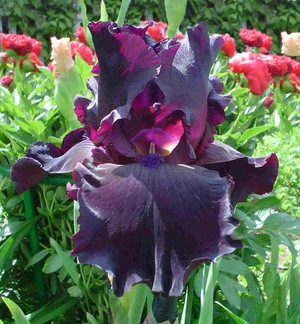 Baltic Sea ... A variety of Germanic iris with a deep blue beard and sky-blue well-corrugated petals.
Baltic Sea ... A variety of Germanic iris with a deep blue beard and sky-blue well-corrugated petals.- Imperial opal ... This is a species of Siberian beardless plants with large (up to 10 cm) yellow flowers, along the edges of the petals there is a white border. The peduncle is high, up to 80 cm.
- Show queen ... Siberian winter-hardy variety with pale white flowers, at the base of which there is a yellow neck.
- Solveig... A type of Japanese iris with large, light purple or blue flowers. If you have the opportunity to provide the plant with a constantly moist soil (this flower does not grow in another), then you should pay attention to the marsh iris. The varieties Flore Pleno and golden Queen are actively used to frame artificial reservoirs.
If you want your garden plot to delight with its beauty all summer, you can purchase varieties of different flowering times and heights. And then, starting from mid-May, early species will already begin to bloom, gradually passing the baton to varieties of mid-early flowering periods (late May-early June). Throughout June, your garden will be decorated with medium sized irises. And finally, late plants will bloom in early July. That is, you can admire these extraordinary flowers almost all summer.
By the height of the iris peduncle are divided into the following groups:
- tall. Grows over 0.7 m in height;
- medium tall (37-70 cm);
- undersized (up to 35 cm).
Whichever type of iris you look at, flowering plants will decorate every corner of your garden and will never disappoint you.
Growing
All irises, without exception, are photophilous, however, when choosing a variety, one should take into account their relationship to moisture. Siberian iris grows well on soils with normal moisture, on marshy, constantly wet soil, species such as bristly, yellow and Kempfer are grown. On well-drained soils - other varieties and types of bearded irises.
Iris are planted in spring or autumn. To achieve lush bloom, they need to be transplanted every 3-4 years, Siberian irises - every 10 years.
Features of planting bearded irises
Bearded irises are distinguished by their extraordinary beauty, but at the same time, they are more capricious and for their good growth and flowering, fulfillment is required several important conditions:
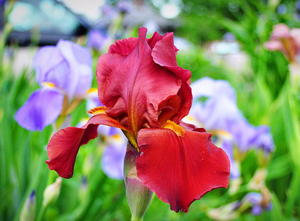 The plant should be planted on hills so that the flow of melt water does not flood the roots;
The plant should be planted on hills so that the flow of melt water does not flood the roots;- it is necessary to provide protection from drafts and good drainage;
- the area for planting bearded iris should be well lit;
- use potassium-phosphorus fertilizers as top dressing;
- the soil before planting must be treated with herbicides in order to destroy weeds;
- you should not apply fresh manure to the soil as fertilizer;
- sand and peat must be added to loam, clay soil to sandy soil, wood ash or chalk to an acidic environment.
Reproduction
Irises reproduce every 4-5 years by dividing the rhizomes at the end of the flowering period (late July-early August). A piece of one to two years of age with a bud of renewal and a trimmed bunch of leaves is separated from the maternal rhizome. Maternal root pre it is necessary to warm up in the sun for 5-6 days... The cut should be planted superficially, sprinkling on top with a thin layer of soil. For the winter, young plantings are covered with spruce branches or mulched with sawdust.
Low-growing blue flowers, as well as irises of dry-loving varieties, are planted in the foreground of mixborders and rockeries. Naturally, moisture-loving varieties are best placed near water bodies. Bearded iris in combination with lavender, coreopsis, undersized goldenrod species, heuchera and peonies form a magnificent variety of mixborders and flower beds.
Pests and diseases
These beautiful and amazing flowers have a large number of pests, therefore, in order to effectively fight parasites, you need to know how to deal with them.
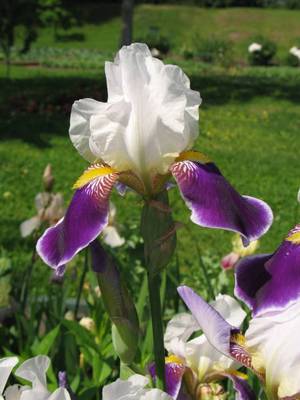 Scoops... A very insidious pest that eats the base of the peduncles. In this case, the irises begin to turn yellow and eventually die. To combat insects, karbofos is widely used. The plant is treated with the drug twice during the growing season with a break of one week.
Scoops... A very insidious pest that eats the base of the peduncles. In this case, the irises begin to turn yellow and eventually die. To combat insects, karbofos is widely used. The plant is treated with the drug twice during the growing season with a break of one week.- Thrips... These insects usually attack during dry periods. The presentation of flowers deteriorates, the buds lose their color and their attractive shape, the process of photosynthesis in the leaves is disrupted. They turn brown and dry out. To destroy thrips, you can use the folk method, which is as follows: grate laundry soap (40 g) and mix with makhorka (400 g), pour the mixture with water and let it brew for 10 days. Strain and process the flowers with the resulting solution. For the same purpose, you can use karbofos, following the instructions.
- When cercosporium and ascochitosis twisting and dying off of the leaves is observed. This happens during the period of active growth of irises. Later, the leaves will grow back, however, this is reflected in the duration of flowering and the size of the buds. You can help the plants by spraying with a 90% solution of copper oxychloride (30 g of oxide / 10 l of water).
- In addition, buds can dry out when irises are damaged. caterpillar grinder... In this case, a 20% solution of confidor insecticide will help: 2 ml of confidor is mixed with water (10 l).
It is believed that although these plants have many enemies, but very resistant to their effects... However, in order for flowers to delight you with their beautiful appearance, you should not forget about proper care for them.
